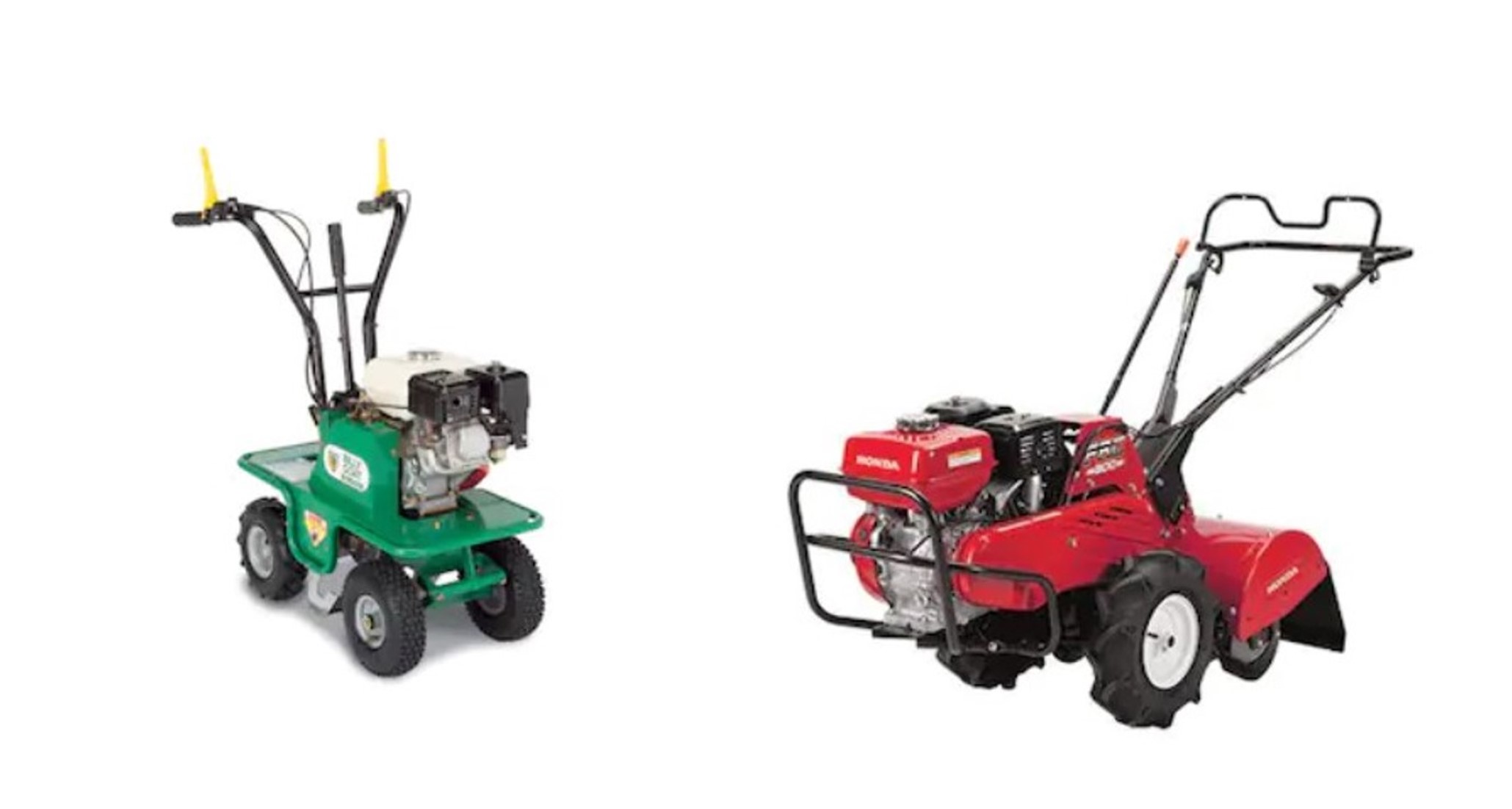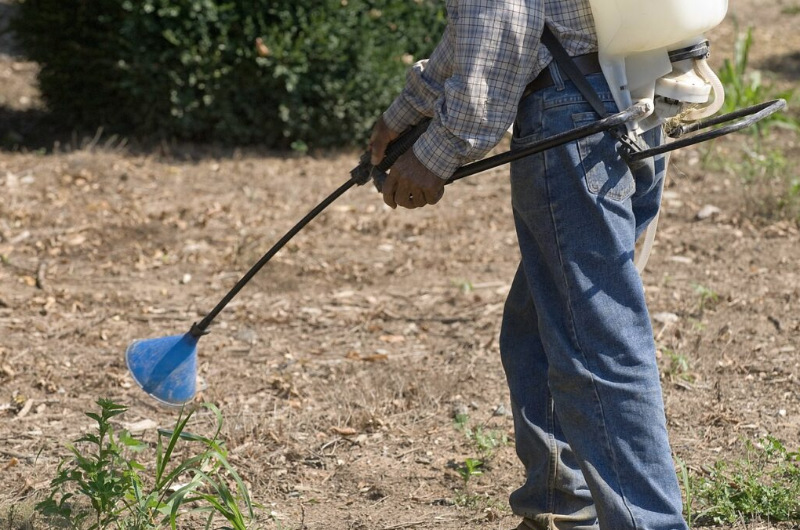Article by Mark Godlewski Cover photo by Dietmar Rabich WikiCommons
One of the best ways to move towards a xeriscape garden is to remove all or most of your lawn. There may be a few situations where you want to keep some traditional turf for specific purposes, but it certainly should not be the default option for filling space.
This post gives you some options for removing your lawn. It draws heavily on a series of earlier notes and publications by Gwen Steele the co-founder of OXA. Many of these methods work best if the dead sod is given at least a couple of months to decompose. The amount of time needed will decrease with higher temperatures and moisture levels.
There are five principal methods for removing a lawn and each has its pros and cons.
- Sod Cutter
- Rototiller
- Herbicide Spray
- Soil Solarization
- Lasagna Method
1. SOD CUTTER
A sod cutter is a gas-powered machine that is maneuvered much like a rototiller. The height (depth of the cut) of the blade is adjustable. Sod cutters can be rented from local rental centres.
• Removes most of the existing grass roots.
• Removes a thick layer of weed seeds.
• Very hard, heavy work.
• Hard to find a place that will accept sod.
• Removes the most nutrient-rich layer of soil.
• Must remove sod under trees by hand to avoid root damage.
• Mark pop-up sprayers to avoid damage.
• Exercise care when using a sod cutter on slopes or uneven ground.
• Mow the grass before you begin; remove the turf when it is not too wet.
2. ROTOTILLER
This method takes patience, as you need to rototill several times. Between each tilling, let the lawn sit four to six weeks to allow the grass/weeds to re-sprout.
• Easier to maneuver than a sod cutter.
• Retains the layer of soil containing the most nutrients and organic matter.
• Area will be disrupted for several months.
• Must remove sod under trees by hand to avoid root damage.
• Do not rototill if your turf contains bindweed or any noxious weed that propagates by rhizomes.
• Do not rototill unless you are certain your underground irrigation system is deeper than the tines of the rototiller
• Mark sprinkler heads of underground irrigation before beginning.
• Be prepared to spend time raking and leveling the tilled area.

Fig. 1 – Home Depot Rental Equipment (Sod Cutter and Rototiller)
3. HERBICIDE SPRAY
This method is worth considering particularly if you are planning to overseed or reseed your existing turf. You can get a contractor in to make certain that the local rules are being followed or you can buy the product and apply it yourself. You can use a ‘mild’ acid herbicide called ‘Eco-Clear’ or you can use a stronger broad-spectrum glyphosate-based herbicide.
• Little labour required.
• Kills turf and growing weeds.
• Does not remove organic matter or nutrients from the soil.
• Eco-Clear is relatively new on the market; it is expensive and may need several applications to kill some perennial weeds and is only effective on actively growing vegetation.
• Herbicides generally do not kill weed seeds, only vegetative growth.
• Residential use of herbicides by other than certified applicators is being reviewed in BC. Some communities such as the City of Kelowna have already banned such use.
• Always follow the label directions closely.
• Notices should be posted, (this may be a local bylaw or strata requirement).
• Do not spray on a windy day or when rain is forecast within 24 hours.
• Once you have confirmed that the herbicide has killed the sod (7-10 days), you can cover the dead sod with a soil/compost mix and let it rot in the ground for a couple of months.

Fig. 2 – Herbicide Spray
4. SOIL SOLARIZATION
Solarization is accomplished by completely covering an area with clear or black plastic, 4-6 mils thickness, during July and August. The intense heat that builds up under the plastic kills the turf and weeds.
• Little labour required.
• Does not remove organic matter or nutrients from the soil.
• Can cause an anaerobic effect, killing beneficial micro and macro-organisms in the soil.
• Strong winds can displace the plastic; anchor it very well with stones, soil, or wood.
• Unsightly.
• Mow the grass as short as possible and water well before covering the area with the plastic. The combination of heat and water speeds up turf decomposition.
• Generally, need to leave the plastic on the soil for 6-8 weeks in the summer.

Fig. 3 – Soil Solarization (Wikicommons RAHUL143)
5. LASAGNA METHOD
This is a layered mulch system. New plantings can be planted through the mulch, but for trees and shrubs it is easier to plant before beginning.• Moderate labour required. • Improves the quality and thickness of topsoil. • Looks good immediately. • Mow the grass as short as possible and water well. • Mark sprinkler heads of underground irrigation before beginning. They may need to be extended later. • Cover the area with newspaper (not coloured and not glossy) or cardboard. Newspaper should be 5-8 sheets thick and overlap both the newspaper and cardboard at least two inches • Cover the paper product with 4 to 6 inches of a soil/compost mix, and soak thoroughly. • Cover the soil/compost with 3 to 4 inches of organic mulch. • Leave the area moist and fallow for 2 to 3 months so that the paper product and sod rots in place.

Fig. 4 – Lasagna Method cardboard cover (Wikicommons Naturein)

Fig. 5 – Lasagna Method organic mulch
Use one or more of these options to remove your lawn and set yourself up for a fine xeriscape garden.

